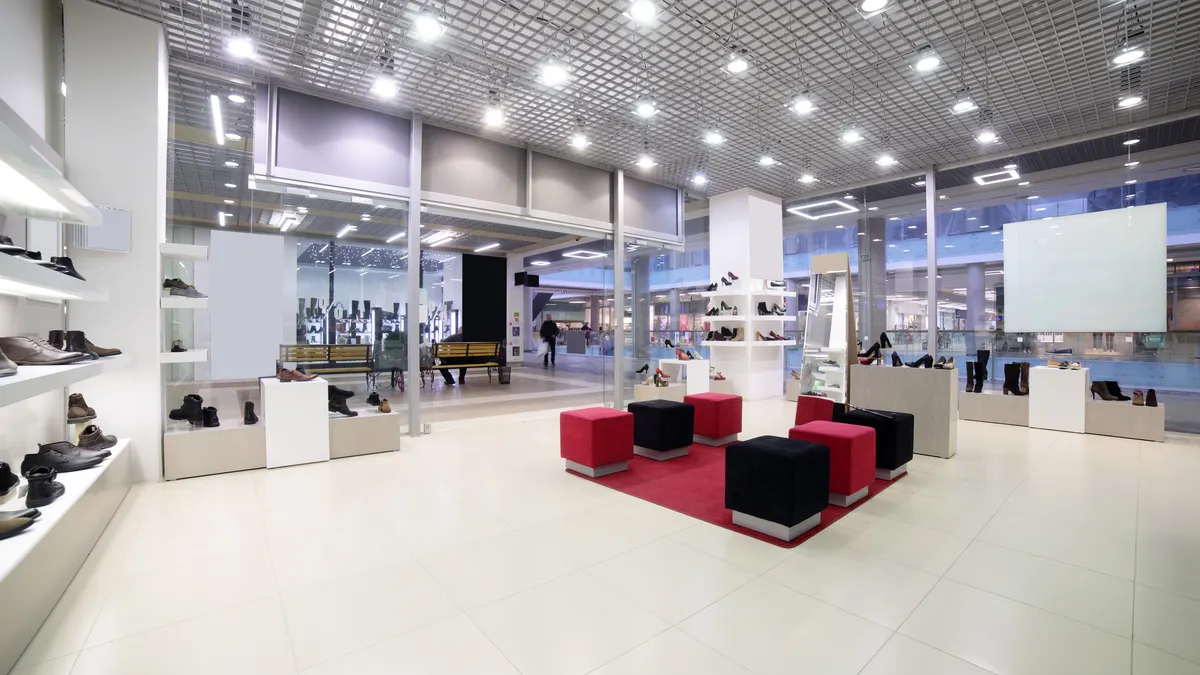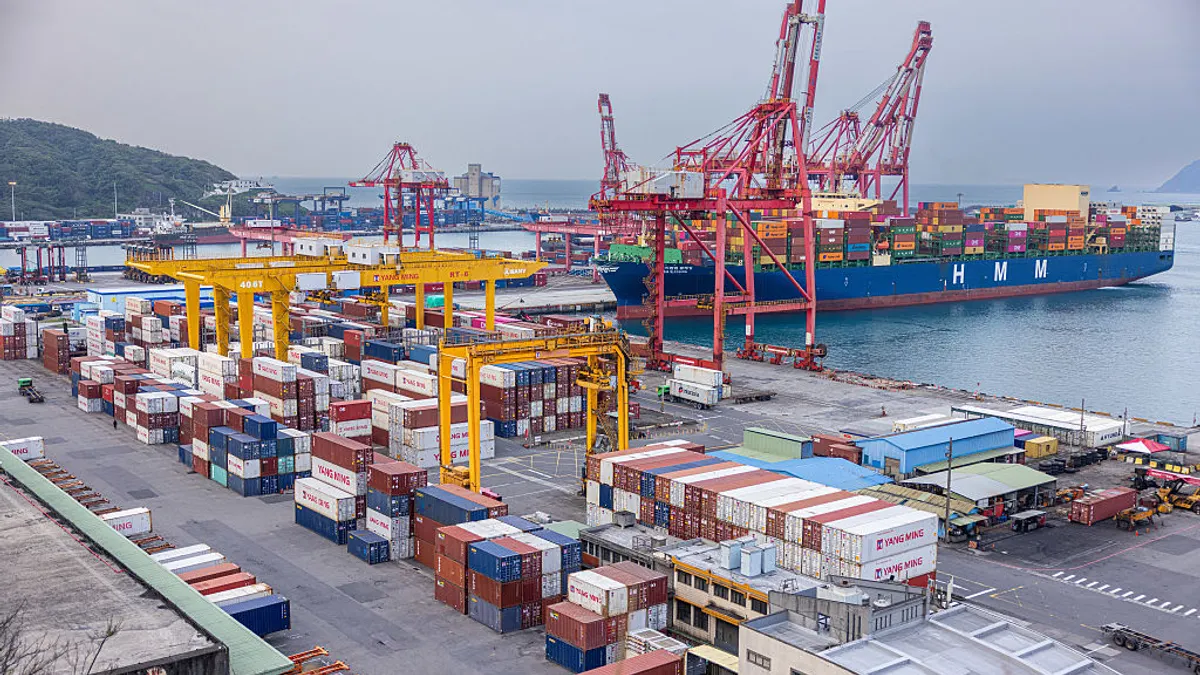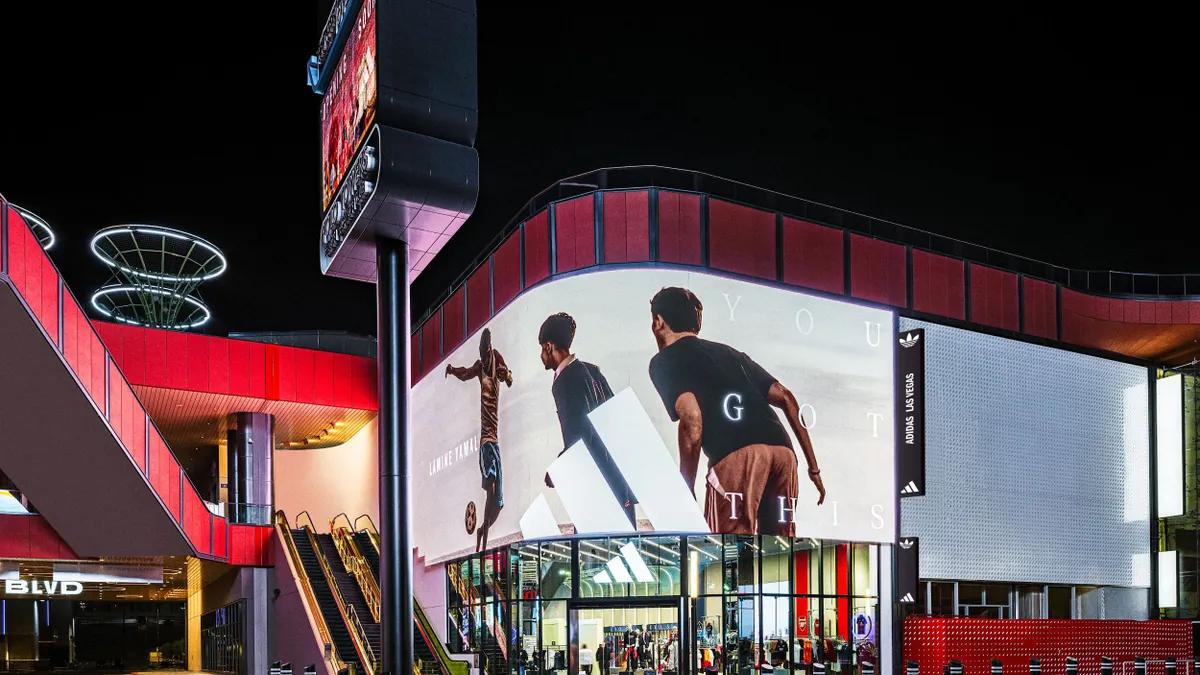Brick-and-mortar stores are in revival mode after the ecommerce surge during the pandemic. With customers returning to stores in-person, they expect a retail experience that is social, immersive and omnichannel, combining the best of online and in-person shopping. To deliver this engaging and efficient experience, brick-and-mortar stores are elevating their offerings by adopting integrated solutions in lighting, electrical systems, controls and networking.
Guiding this transformation are experts like Leviton’s Mike Lehman, General Manager of U.S. Lighting, and John LaMontagne, Vice President of Sales, Lighting and Controls, who emphasize the critical role of physical infrastructure in shaping the modern retail experience.
Lighting up the venue
To create welcoming destinations, stores need beautifully lit circulation areas and product displays.
Lehman underscores the profound impact of illumination: “The lighting in retail environments is essential. It’s as important as the merchandise, overall store design, visual merchandising, location and brand positioning. It’s as important as anything else in the location.”
He stresses that modern retail lighting goes far beyond mere visibility. “No longer is it just, hey, can the customer see the merchandise? Or can the customer get in and out of the store safely? Now retailers have an opportunity to integrate lighting that appropriately illuminates the merchandise and creates a memorable experience that the customer wants to experience again and again.”
As Lehman succinctly puts it, “All light is not equal,” and getting it right is paramount, as “the light can make or break your store. It could ruin the store experience or make it wonderful.”
He recommends retailers focus on three critical areas when designing their lighting solutions:
- Creating a harmonious user experience. Retailers should tailor lighting solutions to their products, customers and brand. The experience must remain consistent for the customer and feel seamless across all touchpoints, ranging from the physical store to the website and mobile apps.
- Mastering the complexity of modern lighting solutions. Any facility can install LED lights, but not every operation understands the nuance around how the luminaire options impact perception and support functionality. For example, the are several properties of light that must be understood and applied correctly, ranging from correlated color temperature (CCT)—how yellow or blue the light is—to the Special Power Distribution (SPD) that indicates the intensity of wavelengths, as well as the Color Rendering Index (CRI) and the Method for Evaluating Light Source Color Rendition (TM-30-24). Proper layering and aiming are also essential, as are appropriate controls for scene setting and energy management.
- Strategic alignment with business goals. Consider your target customer and brand narrative so you can make informed decisions about consistency across locations, and whether local customizations are necessary. Partner with trained lighting professionals to design and install your lighting so you can benefit from their design expertise and get more personalized, effective lighting solutions.
Optimizing Electrical Infrastructure for Modern Retail
Beyond lighting, the foundational electrical infrastructure of a retail store plays a critical role in ensuring consistent operations and customer experience. For multi-location retailers, comprehensive standards for electrical systems are paramount, providing consistency in planning, procurement, operations and maintenance across all stores.
Retailers are increasingly seeking centralized control over their electrical systems, LaMontagne notes, “Retailers are certainly interested in having a greater level of control over their electrical and lighting systems from a central server, or mothership,” he says. “For example, they want to know if one store is drawing more power and why.” This centralized oversight allows for proactive identification of anomalies and optimization of energy use, ensuring operational consistency and efficiency across an entire portfolio of stores.
The overall electrical load for retailers has seen a significant shift, with a new emerging demand: electric vehicle (EV) charging stations. LaMontagne highlights the substantial infrastructure costs associated with EV charging. “EV is a very expensive proposition for retailers. I think the jury is still out on whether or not it pays for itself,” he states, adding that often, retailers decide against it due to the cost.
While an EV charger certainly draws more power, this is often offset by the reduced electrical loads from modern lighting. The decision to install EV chargers often depends on local regulations and the target demographic. LaMontagne observes, “There is a very select clientele that wants that approach,” referring to retailers that attract a higher-end customer base interested in environmental considerations. Retail operators typically have discretion on EV charger installation unless parking lot size mandates it, making it a strategic decision based on customer profile and potential ROI.
Smart Controls and Robust Networking
Consistent controls are vital for delivering consistent customer experiences and operational efficiency. Retailers are leveraging smart dashboards for centralized, granular control over building systems, from advanced lighting features like dimming and color changes to power consumption, ensuring operational consistency across locations.
Robust networking, supported by both cloud and on-premise servers, is vital not only for managing these sophisticated systems, but also for meeting customer expectations for seamless connectivity and omnichannel experiences. As LaMontagne emphasizes, "I'll probably never stay at a place that has bad wi-fi," highlighting that reliable, high-speed Wi-Fi is a non-negotiable amenity for today's shoppers.
Securing the supply chain
Managing advanced lighting, electrical, controls and networking systems across multiple locations can involve complex supply chains and long lead times. Minimizing the number of suppliers to fulfill infrastructure needs streamlines planning, design and procurement, enabling scalability and easy system integrations.
National account suppliers often support retailers by prioritizing consistency in store appearance and operations. “We often write brand standards for the customer spelling out which components and parts are to be used in the electrical, lighting and networking systems,” added LaMontagne. “Then when the installation or maintenance team arrives on site, they have the right parts to make the process go smoothly.”
An integrated supplier like Leviton can advise on practical considerations during facility planning, provide technical specifications during construction and offer support throughout installation and operation. This comprehensive approach prevents finger-pointing between different vendors. As LaMontagne concludes, retailers "want a level of continuity so that the manager at store No. 1 knows exactly how to work store No. 75. It looks and operates the same.”










